Paving the Way to Healthy Homes
How a singular focus on one basic thing — floors — is transforming lives in Africa.
October 02, 2017
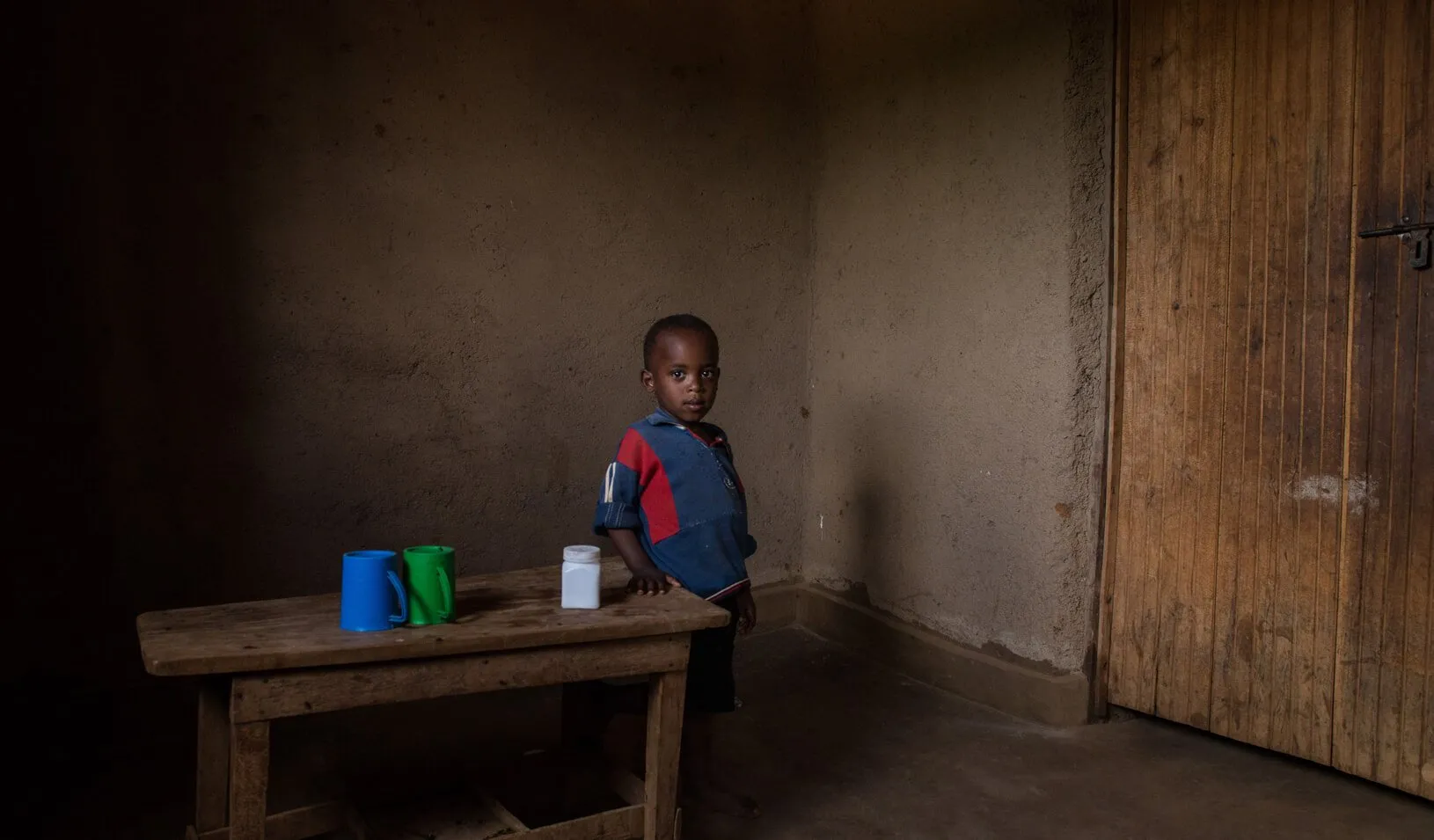
Three-year-old Moise Barihuta in his family’s newly paved living room, Mareba, Rwanda. | Jacques Nkinzingabo
On a cool May morning in eastern Rwanda, in the early days of harvest season, an American businesswoman named Gayatri Datar is driving out to meet some of her customers, almost all of whom are farmers of the poorest sort.
Datar and a few passengers bounce along a rutted road in a truck tattooed with the logo Tube Heza, which in the region’s Kinyarwanda language means “live beautifully.” The pickup rumbles through quiet villages into even quieter farmland beyond. Children rush from tiny adobe houses to wave as it passes. Beside the road, teenage boys use long poles to thwack piles of bean vines and loosen the pods. Beans are both a staple and a cash crop in this sector. Women sit on the ground shucking beans, while others spread them out to dry: red with red, yellow with yellow.
Now and then the truck slows for pedestrians hauling crops: women with vines bundled high atop their heads, men pushing bikes saddled with bananas. Datar, 31, finds this foot traffic both exciting and worrisome. As the rainy season gives way to harvest, many of these farmers soon will have money to spend. Last year, Tube Heza’s parent company, EarthEnable, was inadequately prepared for this seasonal spike and thus missed potential sales. Datar is determined not to let that happen again.
“Everything you see is our market,” she says.
The truck stops before a cluster of homes. On some, the stucco façade has flaked away like sunburned skin, exposing straw in the walls beneath. At first glance, the decaying structures make for a depressing tableau, but the backdrop is lush with greenery, and the air smells like freshly mowed grass.
Datar wants to have a look at the floor that masons from her company recently installed in one of these homes. That’s what EarthEnable does: It sells floors to poor people. Specifically, the social enterprise, which she co-founded and runs, makes paved flooring from compressed earthen materials that are sealed with a proprietary oil. Both the product and the business were incubated four years earlier when Datar was a student at Stanford Graduate School of Business and took a course there called Design for Extreme Affordability.

EarthEnable CEO Gayatri Datar shoots a selfie with Moise Barihuta, the son of one of her customers. | Jacques Nkinzingabo
EarthEnable’s floors, marketed in Rwanda under the Tube Heza brand, cost about 75% less per square foot than concrete, dirt’s most common flooring alternative. The price averages about $80 per home ($60 for materials, $20 for installation) — exceedingly cheap by Western standards but a significant expense in a country where most people live on less than $2 per day.
Damascene Barihuta, 36, and his 3-year-old son, Moise, emerge from one of the huts. The farmer, a father of five, ushers in the guests to show off the new floor in his 275-square-foot home. Unlike the jailhouse brutalism of concrete, the earthen floor looks as organic and elegant as it is substantial — more West Hollywood than East Africa.
The timid farmer describes through a translator how the paved floor has transformed his family’s life. Mice and insects no longer burrow in corners or breed underfoot. Dust no longer clouds the air, making his children cough. And the floor no longer turns to mud when it gets wet — in fact, you can actually clean it with water.
Datar listens to Barihuta for a bit, then turns her attention to the toddler, who has climbed onto her lap so they can shoot selfies. The boy’s eyes go wide when the tall, thin American woman speaks to him in Kinyarwanda. For Datar, encounters like this — venturing out to farm country in jeans and rubber boots to spend time with the people whose lives she hopes to improve — are the best part of her job.
She asks Barihuta what Tube Heza could do differently to turn more of his neighbors into customers. It would have been better, he says softly, if he’d been allowed to pay for the floor in five installments instead of three. He also says he never received a stipend that he’d been promised for referring a customer, a fee that amounts to a little more than one American dollar. Datar tells him she’ll look into the fee.
The Long Road from Boston to Rwanda
The pivotal turn in Gayatri Datar’s journey from her hometown of Boston to rural Rwanda came in December 2004, when an earthquake triggered a tsunami that killed more than 200,000 people in coastal Asia. She was with her older sister in India at the time, visiting family during the winter break of her sophomore year at Harvard University.
She’d been to India often as a child. Her parents were born there and moved to California in the 1970s so that her father, Srikant M. Datar, could get his PhD at Stanford GSB, where he would eventually become a professor. (He’s now on the faculty at Harvard Business School.) What she remembers about those trips to her parents’ homeland were all the poor people everywhere, and her mother’s constant reminders that she was privileged, and that with privilege comes responsibility.
In the aftermath of the tsunami, she headed for India’s decimated east coast. “It devastated those communities, which were already so poor to begin with,” she recalls. “Boats gone, nets gone, houses completely gone. I realized that the home is a cherished place for every family.”
She took a semester-long break to volunteer with a nonprofit organization to help rebuild the region’s homes. Her return to Harvard triggered a brief fit of self-righteous culture shock: “I was horrible to my friends. I just totally judged their choices and their careers,” Datar says. “I was angry at everything. It all seemed so elitist.”
Before graduating, she took another year off to work with nonprofit groups on three different continents: micro-financers in Nicaragua, anti-corruption activists in Albania, and HIV health workers in Namibia.
After Datar graduated from Harvard in 2009, she worked for seven months as a consultant with the World Bank and then spent the next two years at Dalberg Global Development Advisors, a management consulting firm focused on international development. There, she came to believe that private-sector approaches could have lasting positive impact in the developing world — especially when profiteering is stripped from the equation.
Datar was also influenced by a 2007 TED talk by Swedish statistician Hans Rosling, in which he provides a half-century of data showing that most of the world’s poorest countries are on a steady path toward smaller families and longer, healthier lives. The idea of permanently lifting billions of people out of poverty is not quixotic, she realized. It’s just going to take a lot of work.
While at Dalberg, she started applying to MBA programs with a single goal in mind: to learn the business skills that would enable her not only to help the poorest of the poor but to do so on a mass scale. She was accepted into several programs, but it was the Design for Extreme Affordability course that swayed her: “I went to Stanford to take that class.”
— Steve Hawk
This farmer and his son are the anecdotal edge of a broader narrative that Datar has told many times. How dirt floors breed mosquitoes, parasites, and disease. How a paved floor can reduce childhood diarrhea by nearly 50% and parasitic infections by more than 75%. But the problems with dirt floors go beyond hygiene. They are a fundamental indicator of enduring poverty — a daily, depressing reminder of an unfortunate person’s unchanging lot.
About 80% of Rwandans live with dirt floors, according to a 2014 report funded by the U.S. Agency for International Development. Datar’s “back of the envelope” estimate is that as many as 300 million homes worldwide still have them.
She aims to pave them all.
“Look for the Duct Tape”
One of Datar’s fondest memories during her two years at Stanford GSB was the week she spent getting sunburned and muddy while making prototype earthen bricks in the mud of a campus pond called Lake Lagunita. This was in 2013, when she was part of the Design for Extreme Affordability student team that hatched EarthEnable. Her teammates were medical students Ray Deng and Vivian Lei, and a mechanical engineering postgrad named Alice Eamsherangkoon.
Months earlier, as part of the course’s partnership program, the four students had been matched with a nonprofit called MASS Design Group. MASS’s mission is to promote affordable architectural design that improves people’s lives and health, and it had teamed with the Extreme course. The first and most obvious idea was to improve the leaky tin roofs that are ubiquitous in Rwanda.
As part of their research, Datar, Lei, and Eamsherangkoon traveled to Africa to spend time among their future customers. The professors who run the two-quarter course had told them to “look for the duct tape” — the clever, low-cost ways that poor people work around everyday annoyances and hazards — and to keep asking questions to get to the physical and emotional roots of their concerns.
“Poor people are not stupid. Poor people are not lazy. Poor people are poor,” says James M. Patell, the emeritus Herbert Hoover Professor of Public and Private Management at Stanford GSB and founder of the Extreme course. “If you go in thinking that these people are smart, that means they’re smart economically as well. Not in the sense that they can draw supply-and-demand curves, but in the tradeoffs they have to make every day. They understand when something has value and what they’re willing to trade for it. So you treat them as customers — as smart customers.”
It was rainy season when the students arrived in Rwanda early in the 2013 school year. Datar noticed that many of the homes had mats strewn about to cover muddy patches on the dirt floors. She helped one woman wash laundry in a bucket outside and hang the clothes in her house to dry. If a garment fell on the living room floor, it had to be washed again.
Datar asked the mother, “What do you want to improve?”
The woman said, “The roof is leaking.”
“Why is that a problem?”
“The floor gets muddy.”
“Why is that a problem?”
“Bugs come in.”
“Why is that a problem?”
“They bite my children.”
“Why is that a problem?”
“My children get sick.”
Cut Out the Frills
By the time they got back to campus, the students had decided to focus on floors rather than roofs. The most obvious paving solution, concrete, was too expensive and environmentally damaging. They tinkered with rubber: also too expensive. They tested bamboo: too likely to degrade. They spent a frustrating month trying to fabricate injection-molded tiles out of recycled plastic: too ugly, too uncomfortable, and too expensive.
“They were struggling and it wasn’t really going anywhere. We had a lot of concerns,” says Stuart Coulson, an adjunct professor who’s been with Extreme since 2007 and who worked closely with the EarthEnable team. (Coulson will take over the 2017-18 course from Patell, who retired in September.)
Late in the process, Lei connected with a San Francisco Bay Area builder and artist named Massey Burk, who specializes in earthen construction. The team interviewed more experts, then ventured out to Lake Lagunita, where they spent several days in the sun building tiles out of varying ratios of sand, clay, dirt, and water.
As they worked, they kept Patell’s mantra in mind: Identify the one critical function that your product must perform to be of value — that will enable it to be inexpensive but still high quality. Cut out the frills and focus unendingly on that. Get the most critical thing right.
That advice also influenced the crafting of EarthEnable’s concise but ambitious mission statement, which calls for them to “improve health for the billions of people globally who live on dirt floors.”
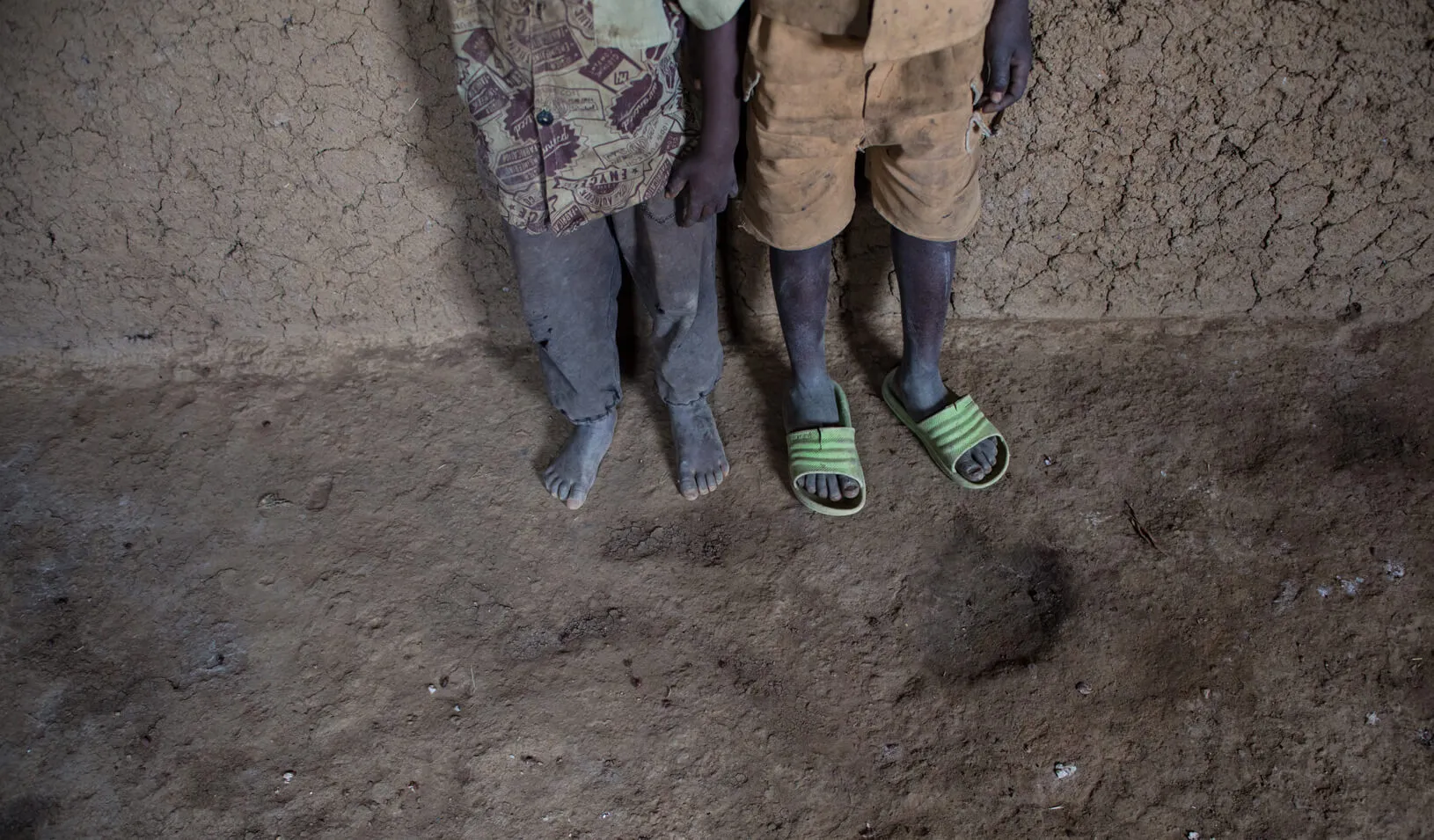
Dirt floor are more than unsanitary. Up close, they resemble scale-model badlands, with ridges and ravines that tilt chairs and obstruct doors. | Jacques Nkinzingabo
It took several hot, mucky days to fabricate a viable prototype, but they were still far from ready to take it to market when the school year ended. All four team members decided to work on the project through the summer (supported by Stanford’s Social Entrepreneurship Lab, the summer extension of the Extreme course), and Datar returned to Rwanda with Deng for several weeks. They learned that linseed oil, the most common sealant for earthen floors in the U.S., would be too expensive for Rwandans. So they recruited Rick Zuzow, a biochemistry PhD candidate at Stanford who’d been on a different Extreme team, to see if he could develop a cheaper varnish.
Datar by this point had emerged as the team’s leader.
“She definitely drove the project forward, in terms of keeping everyone on schedule,” Eamsherangkoon says.
“You know how they name hurricanes after people?” Zuzow asks. “Gaya is why.”
“I remember not wanting to let her down,” says Deng.
During her second and final year at Stanford GSB, Datar was awarded a Stanford Social Innovation Fellowship, which carried with it an $80,000 grant. Ten days after graduation, she got on a plane. Her ticket to Rwanda’s capital, Kigali, was one-way. She was 28.
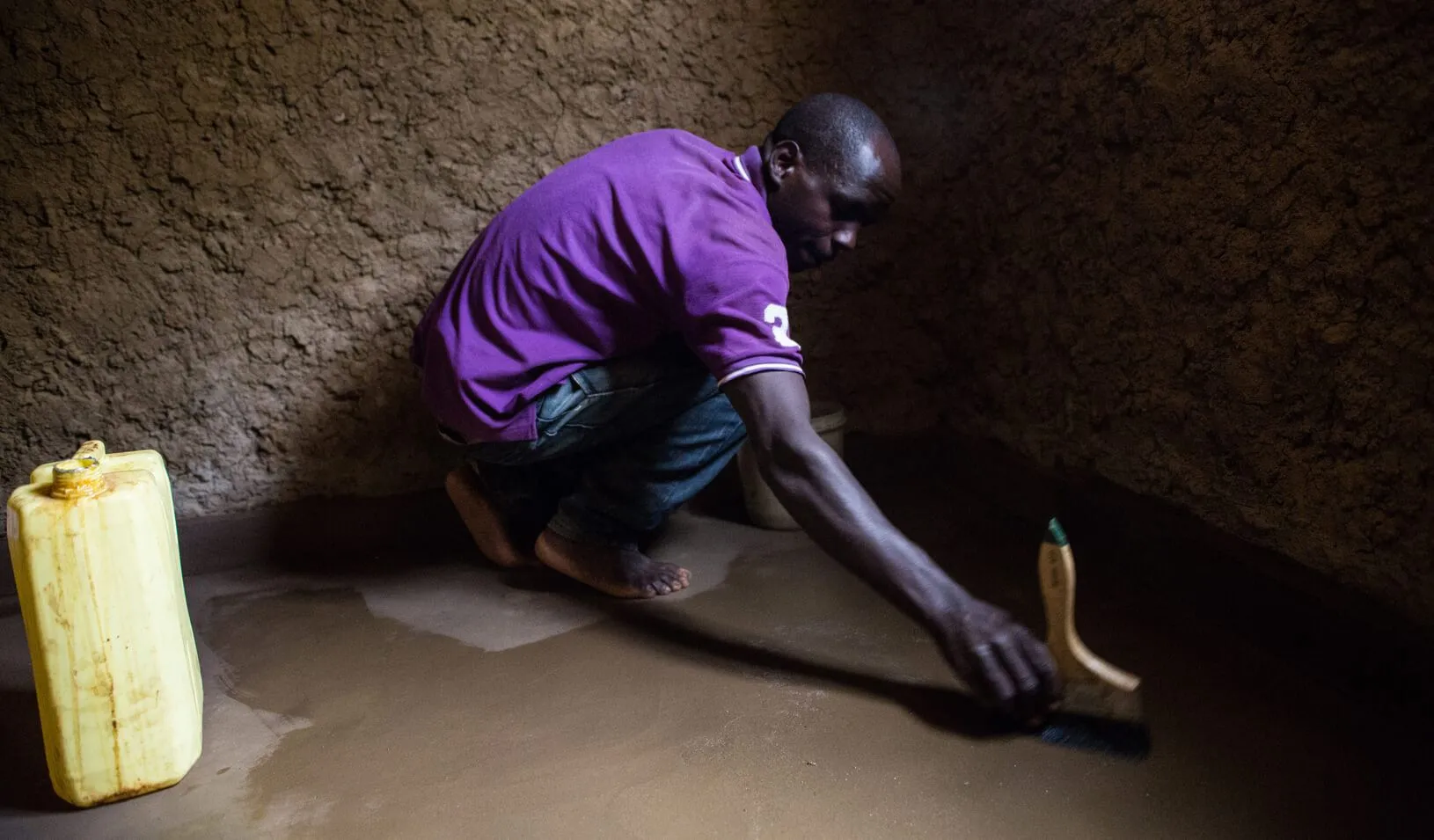
One of EarthEnable’s most experienced masons, Theophile Ngirukwayo, applies the company’s proprietary waterproof varnish to a home in Rwanda’s Bugesera District. | Jacques Nkinzingabo
A Kick in the Guts
In those early days in Kigali, the struggle to find a workable varnish almost torpedoed the business. Back in California, before he joined Datar in Africa as EarthEnable’s cofounder, Zuzow had successfully crafted an impermeable sealant by using a copper additive to catalyze and harden cooking oil into a plastic surface. But the experiments he’d performed back at Stanford’s well-ventilated labs kept failing when he ran them in Rwanda.
Working in Datar’s Kigali guest room, they tested thousands of blends, trying a wide range of catalyzing agents in varying ratios with the oil. Datar spent countless hours measuring the hardening times of different mixtures with the use of a crude hand-built viscometer that Zuzow had constructed out of a wooden plank, a baby food jar, a coffee can, and duct tape.
Although Datar kept reminding him of one of Extreme’s central lessons — fail early, fail often, keep going — Zuzow says he almost gave up: “I thought we were sunk.”
Their morale hit bottom when Datar took the product to market before it was perfected. Their first customer had a wedding coming up and was eager to have a new floor for the celebration. But shortly after the masons installed it, and before the varnish was even applied, the floor developed large cracks — something they’d never seen in prototypes. The groom-to-be was livid. He demanded a refund and told neighbors that the company was a fraud.
It was, Datar says, “a kick in the guts.”
Eventually, they developed better compression protocols, devised a reliable sand-to-clay ratio, and — most important — figured out why the oil chemistry kept failing. It turned out that the soy oil Zuzow had been using contained vitamin E, which prevented the floors from curing and left them sticky. He changed to flaxseed oil and resumed testing. The eureka moment came when he tried a metallic catalyst (which they keep secret) that’s cheap and widely available.
With the varnish issue solved, Datar allowed herself only a brief sigh of relief. She’d learned at Stanford GSB that the make-or-break work begins after you create a “minimum viable product.” As Patell puts it, “Every product has associated services and customer questions that must be answered: How do I learn about it? How do I purchase it? How do I pay for it? How is it delivered to me?”
Zuzow returned to California after two months, while Datar stayed in Kigali and dug in. She opened an office and hired a team of Rwandans who helped her buy vehicles, source materials, and craft a marketing strategy. Its first full year in business, the company sold about 200 floors.
2 Million Floors by 2025
Today, EarthEnable’s eight-room headquarters in the town of Nyamata reflects Extreme’s no-frills philosophy. Most of the walls are covered in overlapping strips of yellowing tape — a writing-surface hack that, Datar explains, is “orders of magnitude cheaper” than whiteboard. The furniture is mismatched and wobbly.
Outside, sand from a nearby quarry is piled beside a row of sieves that hang from overhead pulleys. One worker fills a sieve with dirt while another rocks it back and forth, releasing a mist of fine sand that rains into a wheelbarrow. It provides the flooring’s smooth surface. Nearby, a few dozen barrels of flaxseed oil stand beneath an overladen avocado tree.
Although Datar still makes many day-to-day decisions, she now spends more time plotting the long game, thanks, she says, to the strength and passion of her executive team. In 2016, EarthEnable installed floors in 850 homes. They expect to surpass 2,000 in 2017. Their target is 2 million floors by 2025.
EarthEnable’s steady growth and global ambitions have begun to draw the attention of large donors. In September, the enterprise won an award of $590,000 from the Netherlands’ Postcode Lottery Green Challenge and a grant of $200,000 from Habitat for Humanity.
With her eyes set on scaling, Datar recently hired a country director to open an office in Uganda, which has three times as many residents as Rwanda but about one-tenth of its population density. Having customers scattered so widely will magnify the company’s existing marketing challenges. Very few people in rural East Africa have computers, but most have cellphones, so Tube Heza’s sales teams deploy tactics both archaic and modern. They knock on doors. They drive their trucks to village squares, set up sound systems, blast music to draw crowds, and collect as many phone numbers as they can for future text-message blasts.
Datar’s long-term plan is to create a network of franchisees in Africa, India, and beyond. For quality assurance, the company is building a crowd-sourced, Angie’s List-style rating systems for its freelance masons for customers to access by mobile phone.
They also count on the product selling itself through word of mouth. Which is why, at an EarthEnable executive-team meeting a few days after her visit with the soft-spoken bean farmer and his toddler son, Datar says they need to get better at tracking customer referrals. She wants to ensure that the referrers receive the tiny rewards they’ve been promised.
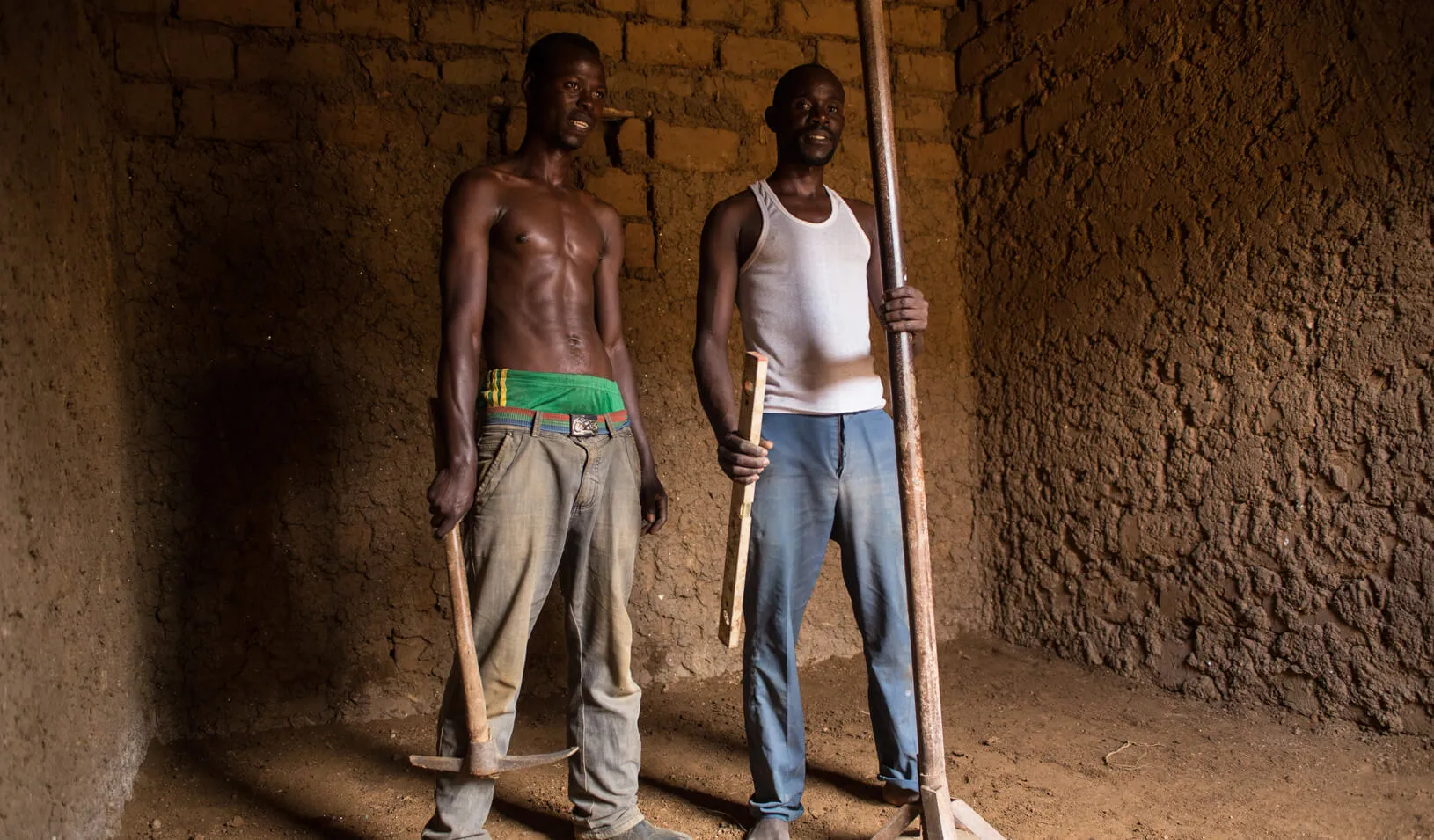
Two EarthEnable masons with the tools of their trade. | Jacques Nkinzingabo
Milestones, Missions, and Bedrock Lessons
It’s Friday night, the end of a long workweek, and Datar is at the wheel of one of Tube Heza’s two pickups, driving a handful of employees back to their homes in Kigali. Many of EarthEnable’s workers commute this way: Datar or another driver picks them up in the morning on the way to the Nyamata office, then reverses the route each night. First stop to last, it works out to about 90 minutes each way, depending on traffic. There’s always traffic.
In the back seat, a young American named Jess Littman, who has the title of executive associate, pulls out her laptop at Datar’s behest. Littman’s stop is about 15 minutes away, and Datar wants to use that time to polish a grant agreement that’s due in a few days.
Littman shares with Datar what she’s written under the agreement’s “milestones” section. Datar suggests a few minor changes. A discussion ensues about the distinction between a parameter and a metric.
When Littman gets to the part where the donor asks for EarthEnable’s mission statement, Datar says, “Let’s hear it.” It’s an odd request, because the mission statement might be the only sentence in this entire document that’s beyond revision. It’s been compressed and varnished over the years, and it contains in its succinctness the bedrock lesson that Datar once learned, from teachers on the other side of the world, about focusing hard on one good thing.
Outside, traffic thickens as the truck approaches a bottleneck. There is much honking and flashing of lights. Littman reads the mission statement aloud, then closes her laptop. Datar smiles and says, “Bam.”
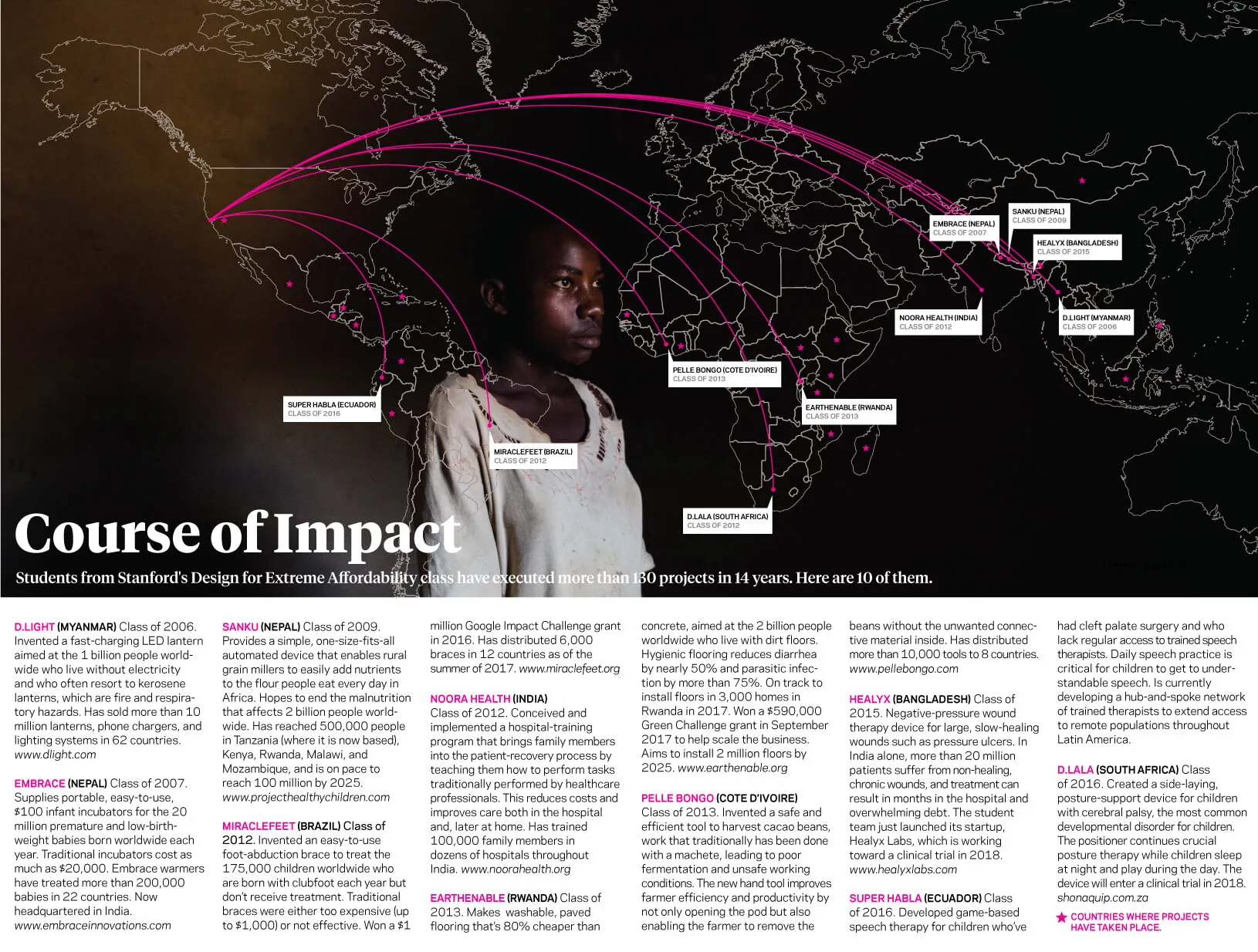
The Critical Function
In screening potential students, the Design for Extreme Affordability faculty looks for one key attribute: passion.
The 40 Stanford students who take Stanford University’s interdisciplinary Design for Extreme Affordability course sequence each year receive many of the same lessons taught to entrepreneurial MBAs. They learn how to do the groundwork that will enable them to build empathy with customers. They learn how to swiftly discard and move beyond bad ideas. But their primary takeaway is the same one that the faculty applies to its execution of the course: To design a high-quality but very affordable product or service, figure out its critical function, then focus exclusively on that.
In a word, simplify.
“We have the students complete this sentence: ‘Come hell or high water, our product or service will … blank,’” says Patell, the emeritus Herbert Hoover Professor of Public and Private Management at Stanford GSB, who founded the class in 2003 and stepped aside in September. “That’s the critical function. If you don’t get that right, the rest doesn’t matter.”
Putting his theory to work, Patell delivers a blunt message during the recruiting speeches he gives each year to interested students from the university’s seven schools. He tells them: This course is a lot of work — probably more work than any single course you’ll ever take. If you’re not passionate about it, don’t apply.
“We assume the med school does a good job at bringing in intelligent potential doctors,” Patell explains. “And we assume the business school does that on the managerial side and the engineering school does that on the engineering side. So I bring it back to the critical function, which for us is passion. If that’s not there, nothing else matters.”
Housed in the Hasso Plattner Institute of Design (aka the d.school), the two-quarter Extreme course is jointly offered through Stanford GSB and the School of Engineering. In a typical class, roughly 12 of the students are MBAs, 16 are engineers, five or six are medical students, and the rest come from other university disciplines such as international policy or the sciences.
Four weeks into the first quarter, the faculty sorts the students into 10 teams of four, based on an alchemist’s blending of skills, interests, and personality types. Each team is matched to a corporate or nonprofit partner’s project, and then everybody dives right in. By the end of the second quarter, the students are expected to have conceived, designed, built, and field-tested a product or service with the potential to improve the lives of thousands — perhaps millions — of poor people. Simultaneously with the physical design, they craft a viable, real-world business plan to bring their product or service to market.
Since Extreme began in 2003, teams have completed 130 projects in 30 countries, reaching an estimated 67 million people. About 30% of the products or services created by its students have either been implemented by partners or gone to market through the students’ own efforts. That’s about triple the success rate in the business world.
— Hawk
For media inquiries, visit the Newsroom.
Explore More

American Innovation Got Slammed by the “Temporary” End of a Key Tax Incentive

Who Wants to Run? Incentivizing Better Participation in Politics



